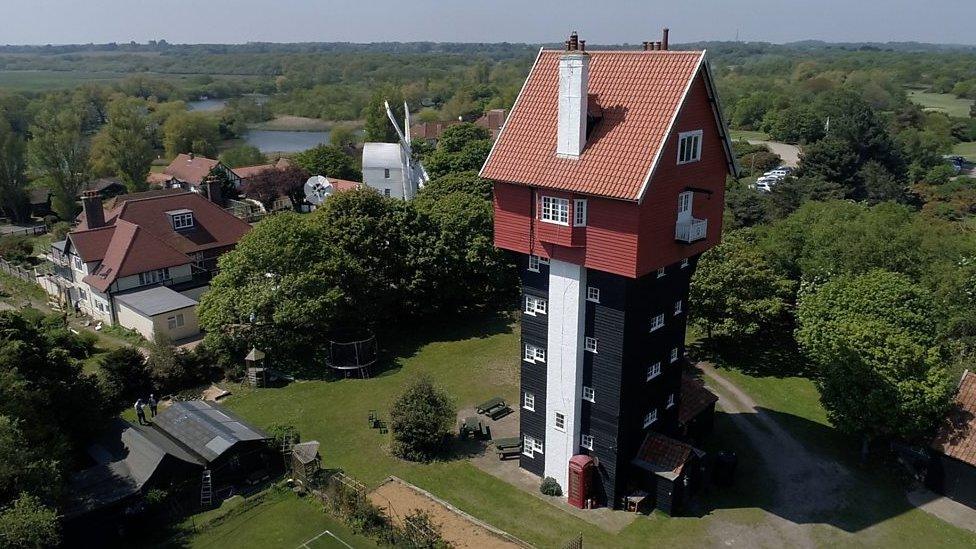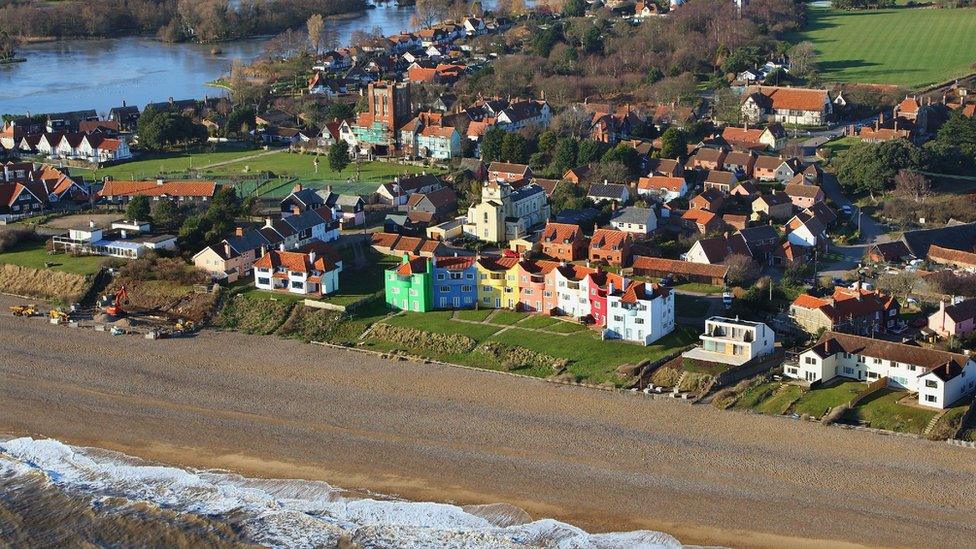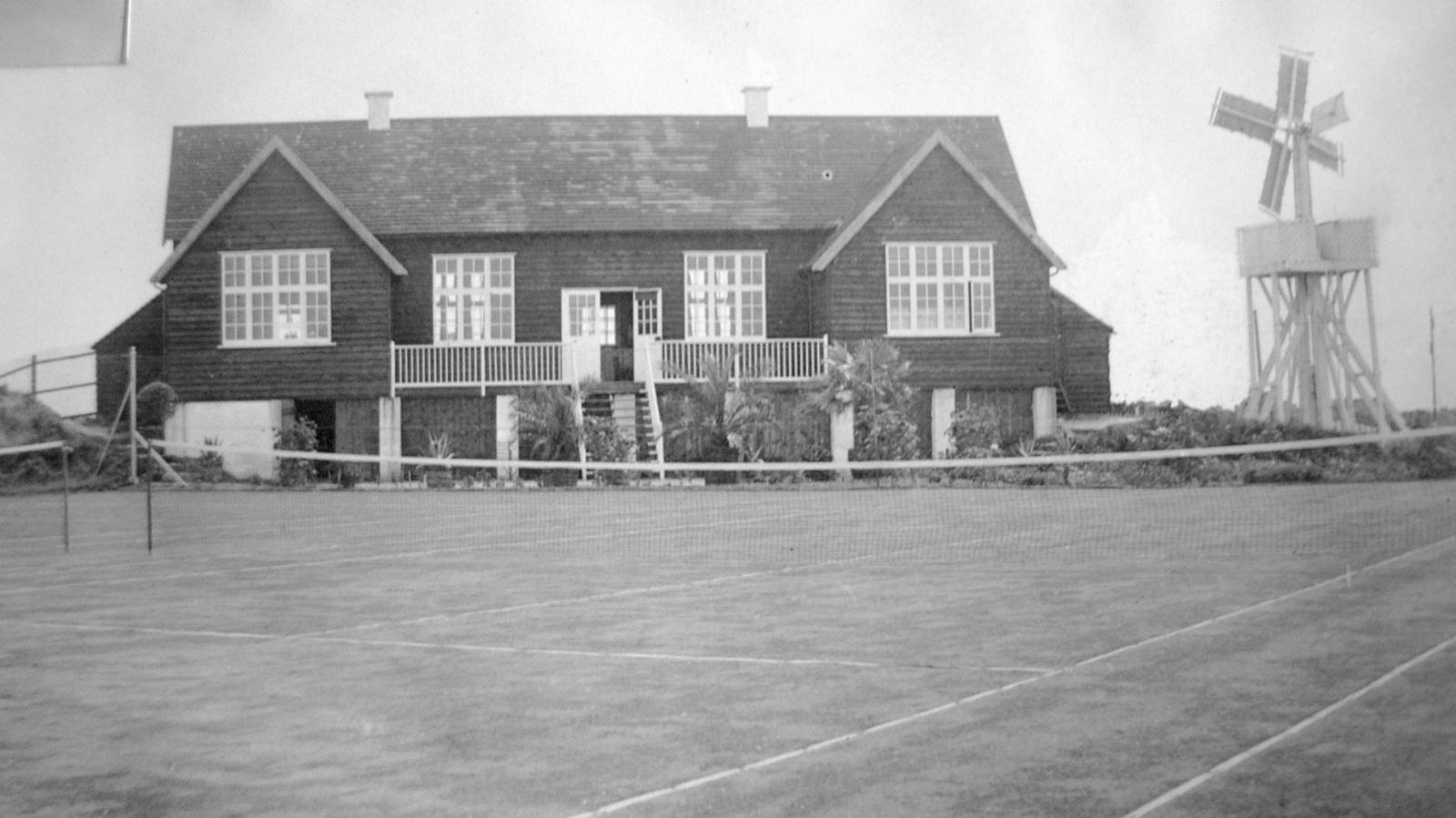Thorpeness House in the Clouds marks its centenary
- Published
Historian Charlotte de Mille said the House in the Clouds was "a fantasy water tower in a fantasy village"
A landmark building created to disguise a coastal village's water tower is marking its centenary.
The House in the Clouds was opened in 1923 to provide Thorpeness, Suffolk, with storage for its water supply.
It was designed as "a fantasy water tower in a fantasy village" by its founder Glencairn Stuart Ogilvie.
Historian Charlotte de Mille said he would probably be "surprised and delighted" it is now one of the county's most famous buildings.

The adjacent windmill, which Ogilvie bought from the nearby village of Aldringham, was used to pump the water
The building had seven bedrooms and two reception rooms in its tower, sitting beneath a 50,000-gallon (227,000-litre) water tank in the "house".
Mr Ogilvie initially called it the Gazebo, but when his friend and children's author Mrs Malcolm Mason christened it the House in the Clouds, external, "he pounced on the name", said Dr de Mille.
While she was delighted with its design, a journalist at the Sunday Referee described it as a "monstrous pigeoncote".
Mr Ogilvie replied it was "more practical and more picturesque than those usually erected by our municipal authorities" and urged town planners to follow his example, external.

The water tower was clad in black weather boarding and a pantile roof, to connect it with traditional Suffolk architecture
The playwright had unexpectedly inherited the estate in 1907 and "had a very theatrical vision for developing the land", said Dr de Mille.
"This was a fantasy village inspired by his friend, the Peter Pan playwright JM Barrie," she said.
At its centre was a lake called the Meare, with islands named after Peter Pan and Wendy.
Work on the holiday home business halted during World War One when his eldest son Alec died after being gassed.
Dr de Mille said he made employing former servicemen a priority and "85% of the villagers and workforce came from an ex-service background" when work resumed in 1919.

Thorpeness remains a popular holiday village on the Suffolk coast
The gravity-fed water tower was built with a steel structure, filled out with concrete breeze blocks made by his workforce in Thorpeness.
It was then clad in black weather boarding and a pantile roof, connecting it with traditional Suffolk architecture.

The property offers unrivalled views across the Suffolk countryside
Mr Ogilvie supplied the second generation Arts & Craft-style village designs, while architect Frederick Forbes-Glennie did the "practical nuts and bolts of building", said Dr de Mille.
The House in the Cloud's water tank was removed in 1979 after Thorpeness joined the mains water supply. The cottage at the top is now a large, galleried room.
The building was chosen by the 20th Century Society to represent 1924 in its book, 100 Buildings in 100 Years.

Find BBC News: East of England on Facebook, external, Instagram, external and Twitter, external. If you have a story suggestion email eastofenglandnews@bbc.co.uk, external
Related topics
- Published8 June 2022

- Published10 July 2019

- Published27 May 2012
